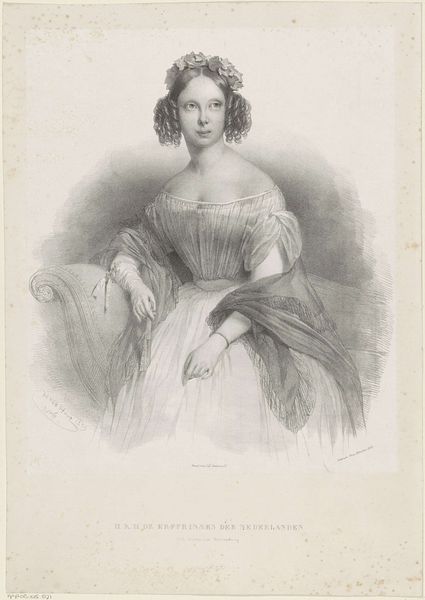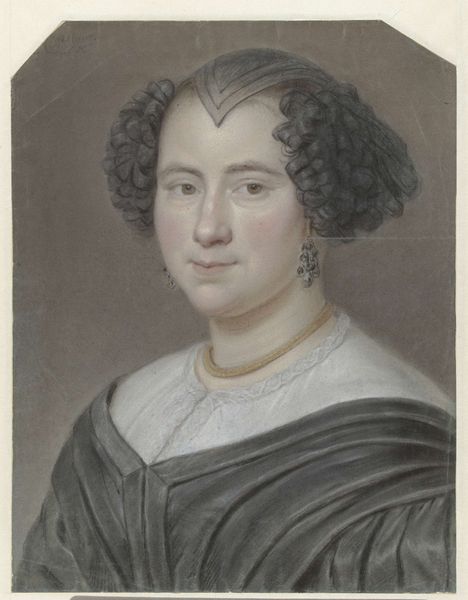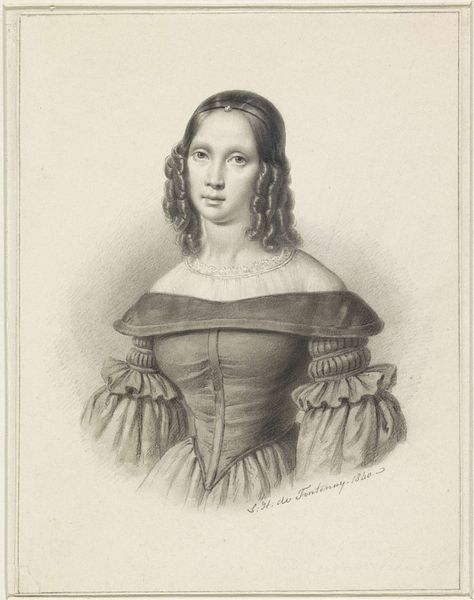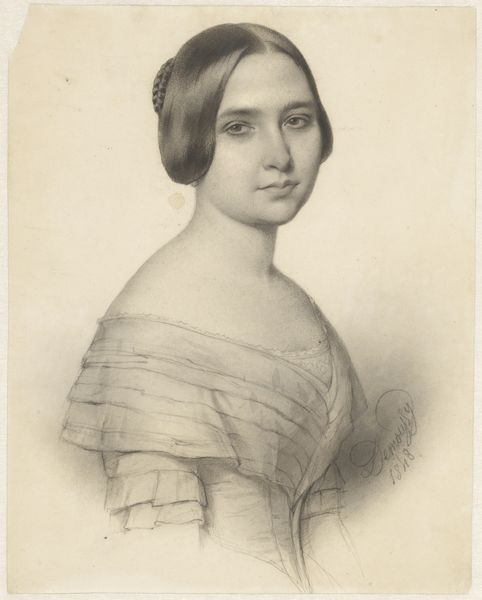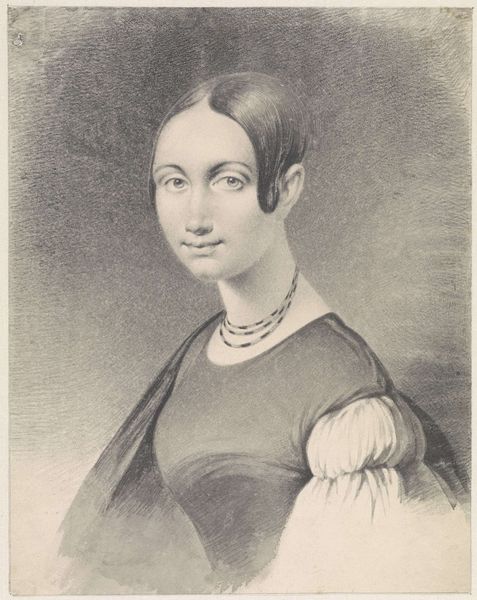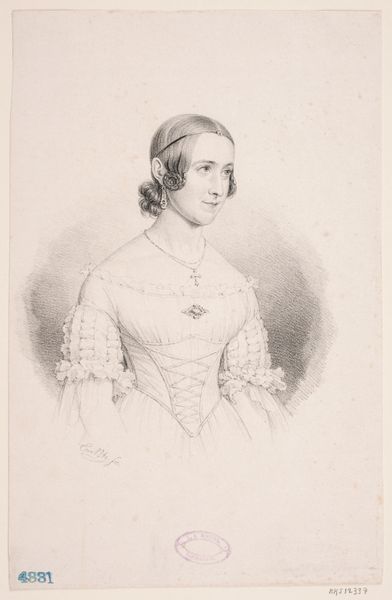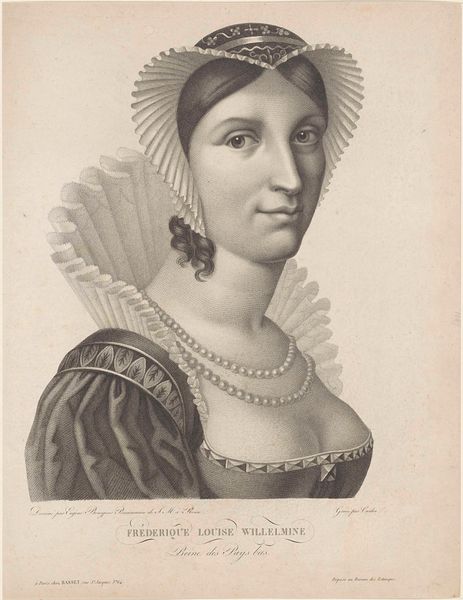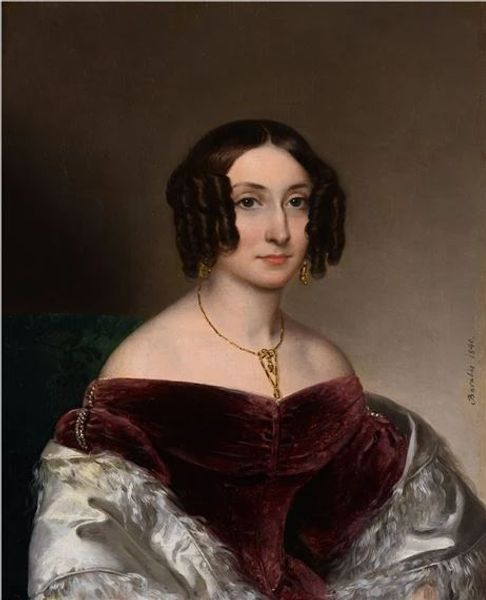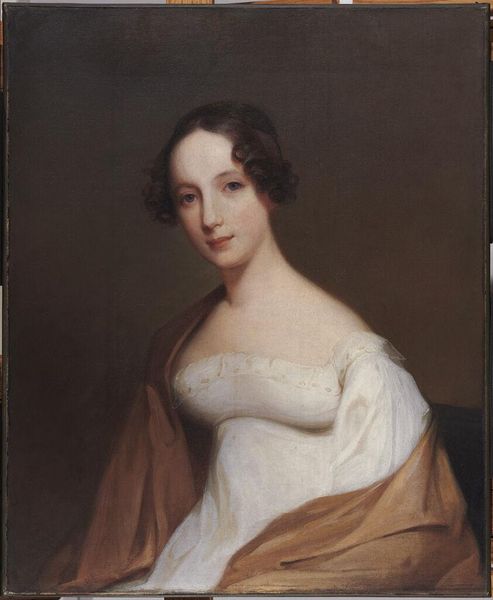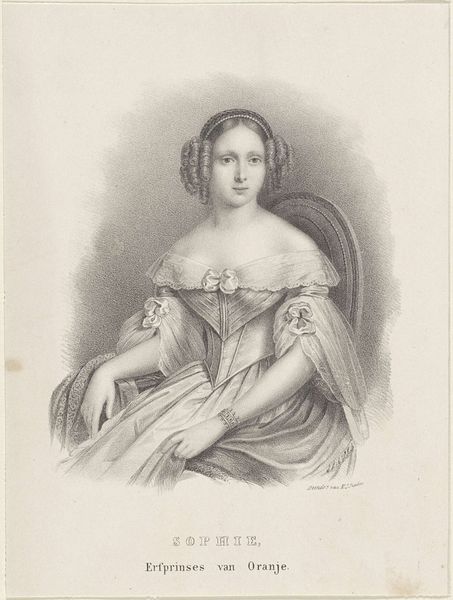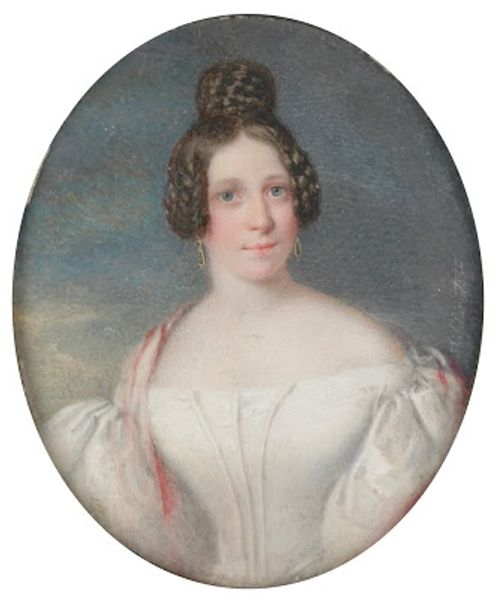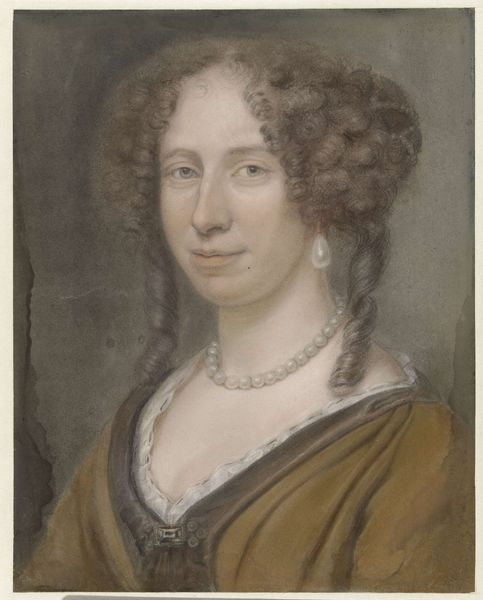
watercolor
#
portrait
#
self-portrait
#
watercolor
#
romanticism
#
watercolor
#
fine art portrait
Dimensions: height 164 mm, width 124 mm
Copyright: Rijks Museum: Open Domain
Curator: Here we have “Woman in a Blue Dress, with Golden Earrings,” an intriguing watercolor portrait that historians place between 1782 and 1849. It’s currently housed at the Rijksmuseum. Editor: My first impression is one of quiet strength. There's a reserved, almost stoic quality to her gaze that feels quite modern despite the classical rendering. Curator: Absolutely. It's crucial to consider the evolving role of women during that period. The controlled emotion, the emphasis on respectability through dress—it speaks volumes about societal expectations and constraints. The blue dress and modest jewelry serve not just as decoration but also as signifiers of her social standing. Editor: The blue is interesting; it feels like a subtle invocation of the Virgin Mary, linking this woman, perhaps unconsciously, to notions of purity and idealised femininity. And that single clasp holding her bodice together – is there a repressed sensuality being alluded to? Curator: I see your point about the Marian connection; blue was a costly pigment often associated with religious figures, suggesting reverence or status. And the brooch… yes, perhaps a subtle nod to restrained desire, acceptable within the bounds of matrimony, or the social contract. Remember also the power dynamics inherent in portraiture; who commissions the work shapes its presentation and, therefore, our interpretation. Editor: True. Those golden earrings, too. They remind me of talismans, maybe symbols of protection or wealth handed down through generations, tangible links to a family’s past and enduring status. Is the anonymous nature of this woman another message, a sort of intentional leveling and erasure of individuality to focus only on a singular message about societal pressures? Curator: That's a thought-provoking question! The anonymity does contribute to a broader reading of her as representative, almost an archetype. However, we need to consider authorship—were details intentionally obscured to protect her reputation, given prevailing societal norms? This piece is brimming with coded statements about her life and her role. Editor: It becomes clear in observing the way she positions herself that visual language carries so much cultural weight, acting almost like silent dialogues throughout centuries. Each color, cut of the cloth and ornamental piece weaves narrative. Curator: Precisely. We began seeing this woman as a cipher representing all other women in this specific place and era. By investigating her context more deeply, she's revealed layers, speaking across centuries.
Comments
No comments
Be the first to comment and join the conversation on the ultimate creative platform.

